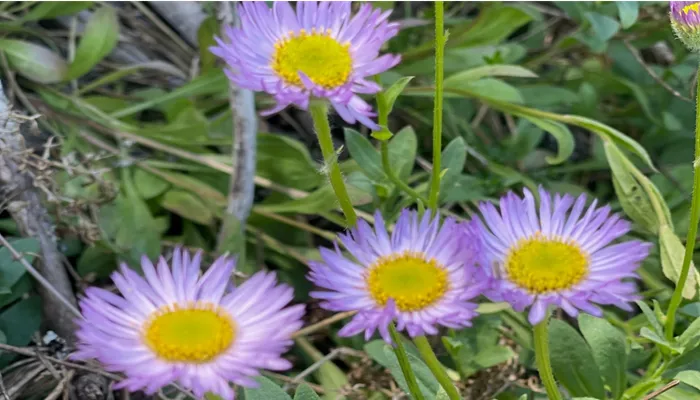A team of researchers has made an exciting discovery, finding a plant believed to be extinct for over 50 years. This rediscovery, after a decade-long search, marks a significant milestone in the effort to reverse environmental damage on the Channel Islands.
John Knapp, Senior Scientist at The Nature Conservancy, expressed his enthusiasm: “The excitement was through the roof. After ten years of searching for this plant and others, finding one was incredible after nine years of no success.”
The plant, known as Saints’ Daisy, was last seen on Santa Cruz Island in the mid-1960s. Knapp, along with scientists from The Nature Conservancy, the Santa Barbara Botanic Garden, and the San Diego Zoo, embarked on the search for this elusive species.
“This perennial plant grows about a foot tall,” Knapp explained. “It has long, linear leaves and yellow flowers with purple edges, resembling a daisy from the sunflower family.”
The Saints’ Daisy was last observed by a botanist from the Santa Barbara Botanic Garden in the 1960s. Since then, it had not been seen on the island.
On April 8, during an expedition in the backcountry of Santa Cruz Island, Sean Carson, Rare Plant Field Program Manager at the Santa Barbara Botanic Garden, recalled where the plant was last recorded. Despite challenging conditions, Carson’s intuition paid off. “As I climbed the steep cliff and saw the dark green leaves, I knew we had found it,” he said.
The team discovered a small patch of the plant, approximately five feet by five feet in size. Carson noted, “We might not have seen it if we had searched earlier. Our timing was crucial.”
The Saints’ Daisy was previously found onshore in parts of Santa Barbara and San Luis Obispo Counties, with a small colony near Lompoc. The rediscovery of this rare plant signifies more than just a successful search. It reflects the broader success of ongoing restoration efforts on the Channel Islands.
The introduction of non-native species like sheep and pigs in the 1800s had severely impacted native plants. Recent decades have seen substantial efforts to restore the islands, including removing these invasive species and rehabilitating habitats. Carson sees this discovery as evidence that these efforts are making a difference. “This is really important because it shows the island is recovering,” he said.
In addition to the Saints’ Daisy, researchers have also found a black oak tree previously thought to be extinct on the island. The team is now focused on collecting seeds and possibly transplanting them to expand the small colony of Saints’ Daisies.
Despite the positive find, Knapp and his team acknowledge that the plants are still at risk. Their work to protect these rare species continues, offering hope for further recoveries. Last year, successful conservation efforts led to two other rare plants being removed from the endangered list.


